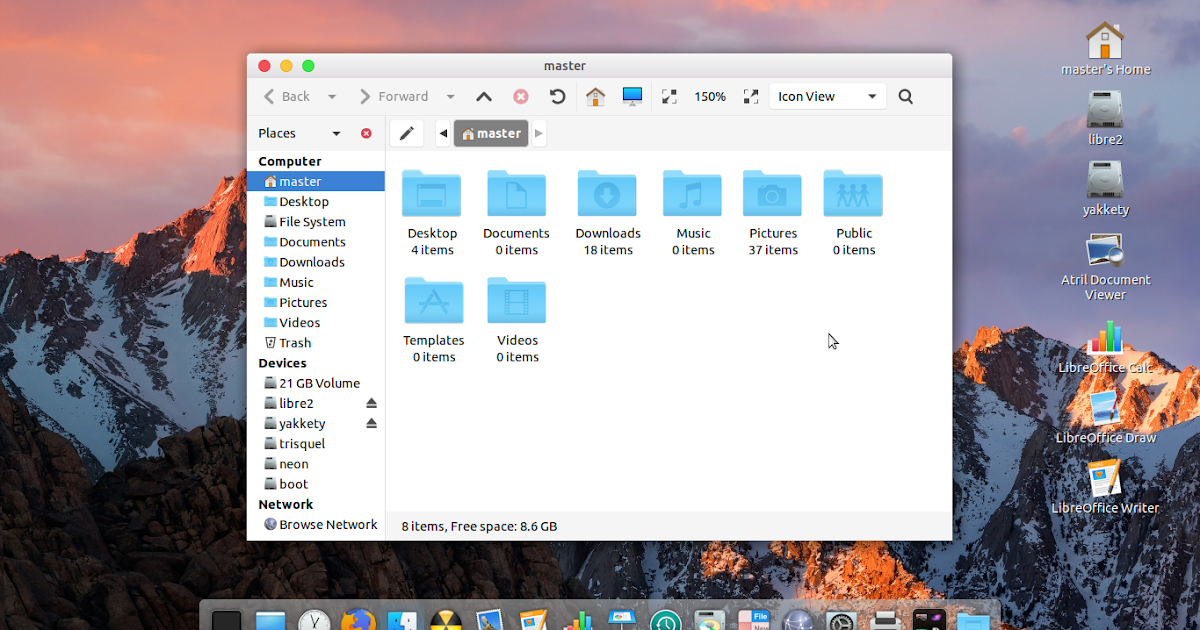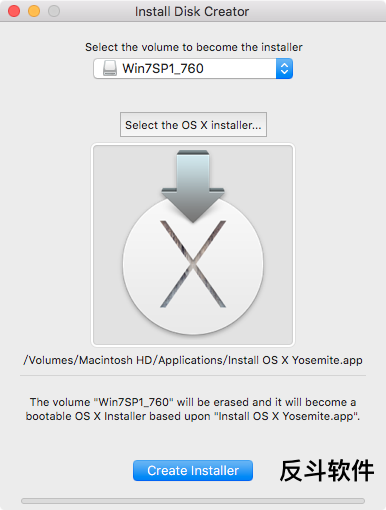
Installing Yosemite from a bootable drive comes in handy if you want to do a clean install - wiping your hard drive and installing a fresh copy of the operating system, for example, or if you're installing the software on multiple Macs and don't want to have to download it each time. First up, you will need to format the USB drive. To do this, start ‘Disk Utility’, select the flash drive.

It can be quite easy making an update to the OSX 10.10 Yosemite from the Mac App store for one computer, but when it comes to making updates for several Macs, or even doing a fresh install, you might find it really stressful having to make those updates separately. One way to save yourself the hassle is grabbing the Mac update on a USB thumb drive and installing the update using same drive on all your Macs.
It is important to note that running the Yosemite update on your Mac before following the below procedures would erase the installer from your Applications folder. So it is necessary you firstly perform this tutorial using any of the below methods, unless you wish to download a fresh copy of the update again from the app store. Let’s move on to the tutorial.
- Must Read:MAC OS X vs PC Windows – Which Should I Choose / Buy?
Things You’ll Need

- A Mac
- An 8GB USB Flash Drive or larger where you would be burning the OSX Yosemite copy to.
- The OS X 10.10 Yosemite installer from the Mac App Store in your Applications folder
- An Administrator account on your Mac
Method 1: Using DiskMaker X
Using Diskmaker X is the easiest way to burn or make a bootable USB Flash drive. Here is how to go about it.
1. Ni softmotion for solidworks 2012. You need to download the Yosemite installer as stated above from the Mac App Store and DiskMaker X .
2. Insert your 8GB (or larger) flash drive into your MAC. Make sure you must have backed up all important stuff, as you will loose them in this process from the flash drive.
3. Launch DiskMaker X. The app will offer to make installers for OS X 10.8, 10.9, and 10.10. Since we wish to install Yosemite, you will have to select 10.10 and let DiskMaker X handle the rest. DiskMaker X would find the Yosemite Installer and have it installed on your thumb drive. If it doesn’t find it, you can click on “Select an Install File” so you can easily navigate to the installer.
After the whole process must have been completed, you can now use this flash drive to install OSX Yosemite to any MAC. It’s actually that simple.
Method 2: Using Terminal
If for some reasons you couldn’t get DiskMaker X working for you, you might want to follow this geeky steps using Terminal to achieve same result.
1. Firstly Download the Yosemite installer.
2. Insert your 8GB (or larger) flash drive (make sure you assign a name to it – I’ll be using Untitled as my drive name for this tutorial). Make sure you format your USB flash drive in OS X Extended (Journaled) using Disk Utility.
3. Launch the Terminal application on your MAC. Then type (or copy and paste) the following command into your Terminal window. Make sure you replace Untitled with the name of your drive. Then hit Enter on your keyboard.
sudo /Applications/Install OS X Yosemite.app/Contents/Resources/createinstallmedia --volume /Volumes/Untitled --applicationpath /Applications/Install OS X Yosemite.app --nointeraction
4. Now you would be prompted to type in your password, then press Enter again.
Install Yosemite From Usb
Allow terminal to complete the process (this could take close to half an hour). You can take out your USB Flash when you get the Done prompt. After it’s done, you should be able to use your USB Flash drive as a bootable disk to install OSX 10.10 Yosemite on any MAC computer.
Note: The Bootable USB Flash drive would not only be used to install Yosemite on Mac computers, but would also have utilities like Disk Utility and Time Machine recovery.
- Must Read:All There Is To Know About Windows 10
To make use of this thumb drive to install the OSX 10.10 update, you can change the default Startup Disk in System Preferences or by holding down the Option key at boot and selecting the drive.
I hope you find this useful.
It was 2009 when Apple last released a new operating system on physical media. Things have proceeded remarkably smoothly since version 10.7 switched to download-only installers, but there are still good reasons to want an old, reliable USB stick. For instance, if you find yourself doing multiple installs, a USB drive may be faster than multiple downloads (especially if you use a USB 3.0 drive). Or maybe you need a recovery disk for older Macs that don't support the Internet Recovery feature. Whatever the reason, you're in luck, because it's not hard to make one.As with last year, there are two ways to get it done. There's the super easy way with the graphical user interface and the only slightly less easy way that requires some light Terminal use. Here's what you need to get started.
- A Mac, duh. We've created Yosemite USB from both Mavericks and Yosemite, but your experience with other versions may vary.
- An 8GB or larger USB flash drive or an 8GB or larger partition on some other kind of external drive. For newer Macs, use a USB 3.0 drive—it makes things significantly faster.
- The OS X 10.10 Yosemite installer from the Mac App Store in your Applications folder. The installer will delete itself when you install the operating system, but it can be re-downloaded if necessary.
- If you want a GUI, you need the latest version of Diskmaker X app—we wrote this article based on version 4 beta 2, but if a 'final' version is released alongside Yosemite we'll update the article. This app is free to download, but the creator accepts donations if you want to support his efforts.
- An administrator account on the Mac you're using to create the disk.
The easy way
Once you've obtained all of the necessary materials, connect the USB drive to your Mac and run the Diskmaker X app. The app will offer to make installers for OS X 10.8, 10.9, and 10.10, but we're only interested in Yosemite today.
AdvertisementInstall Disk Creator Yosemite Download
Diskmaker X has actually been around since the days of OS X 10.7 (it was previously known as Lion Diskmaker), but it's more important now because Apple has made alterations to the installer that prevent easy USB drive creation using the built-in Disk Utility app. It's still possible to create a disk manually using a Terminal command (which we'll go into momentarily), but Diskmaker X presents an easy GUI-based way to do it that is less intimidating to most people.
Select OS X 10.10 in Diskmaker X, and the app should automatically find the copy you've downloaded to your Applications folder. If it doesn't detect the installer (or if you click 'Use another copy'), you can navigate to the specific installer you want to use. It will then ask you where you want to copy the files—click 'An 8GB USB thumb drive' if you have a single drive to use or 'Another kind of disk' to use a partition on a larger drive or some other kind of external drive. Choose your disk (or partition) from the list that appears, verify that you'd like to have the disk (or partition) erased, and then wait for the files to copy over. The process is outlined in screenshots below.
The only-slightly-less-easy way
If you don't want to use Diskmaker X, Apple has actually included a terminal command that can create an install disk for you. Free bird breeding record keeping software. Assuming that you have the OS X Yosemite installer in your Applications folder and you have a Mac OS X Extended (Journaled)-formatted USB drive named 'Untitled' mounted on the system, you can create a Yosemite install drive by typing the following command into the Terminal.
sudo /Applications/Install OS X Yosemite.app/Contents/Resources/createinstallmedia --volume /Volumes/Untitled --applicationpath /Applications/Install OS X Yosemite.app --nointeraction
The command will erase the disk and copy the install files over. Basara heroes 2. Give it some time, and your volume will soon be loaded up with not just the OS X installer but also an external recovery partition that may come in handy if your hard drive dies and you're away from an Internet connection.
Install Disk Creator Yosemite Windows 10
Whichever method you use, you should be able to boot from your new USB drive either by changing the default Startup Disk in System Preferences or by holding down the Option key at boot and selecting the drive. Once booted, you'll be able to install or upgrade Yosemite as you normally would.